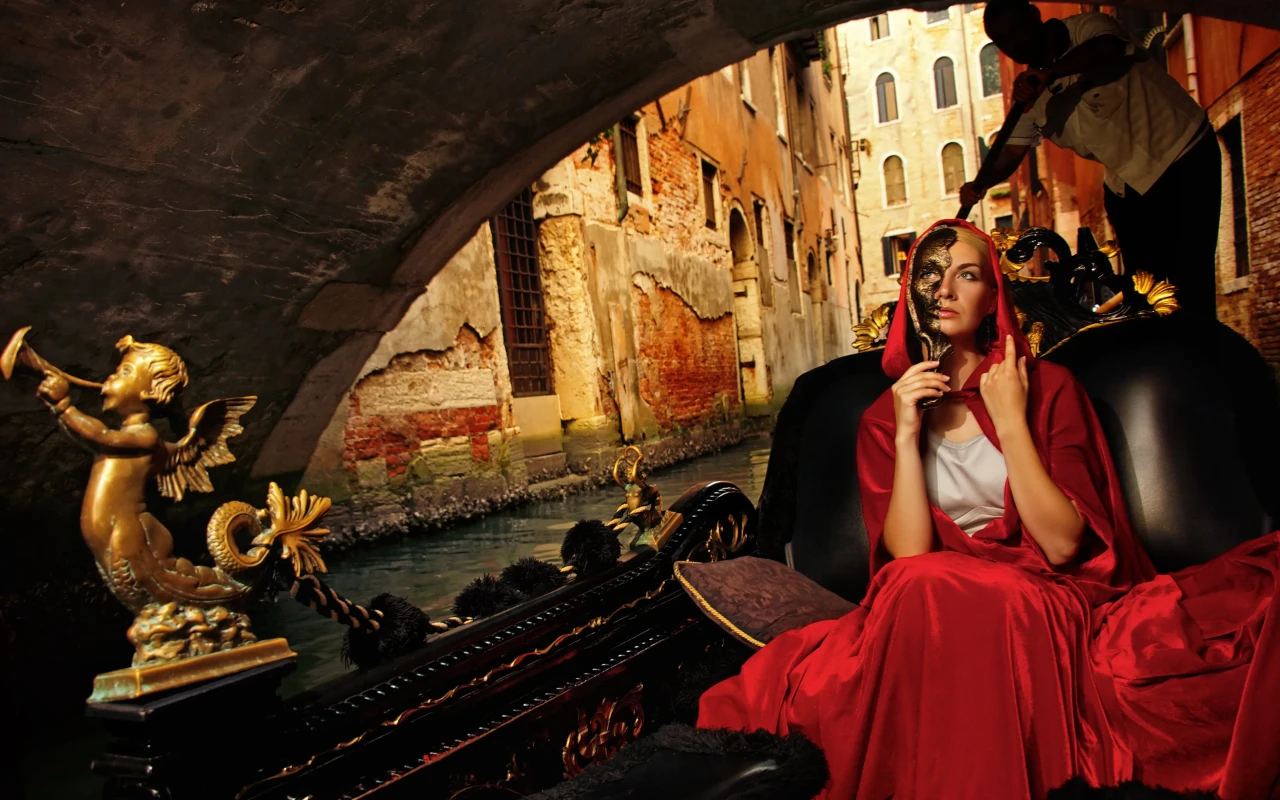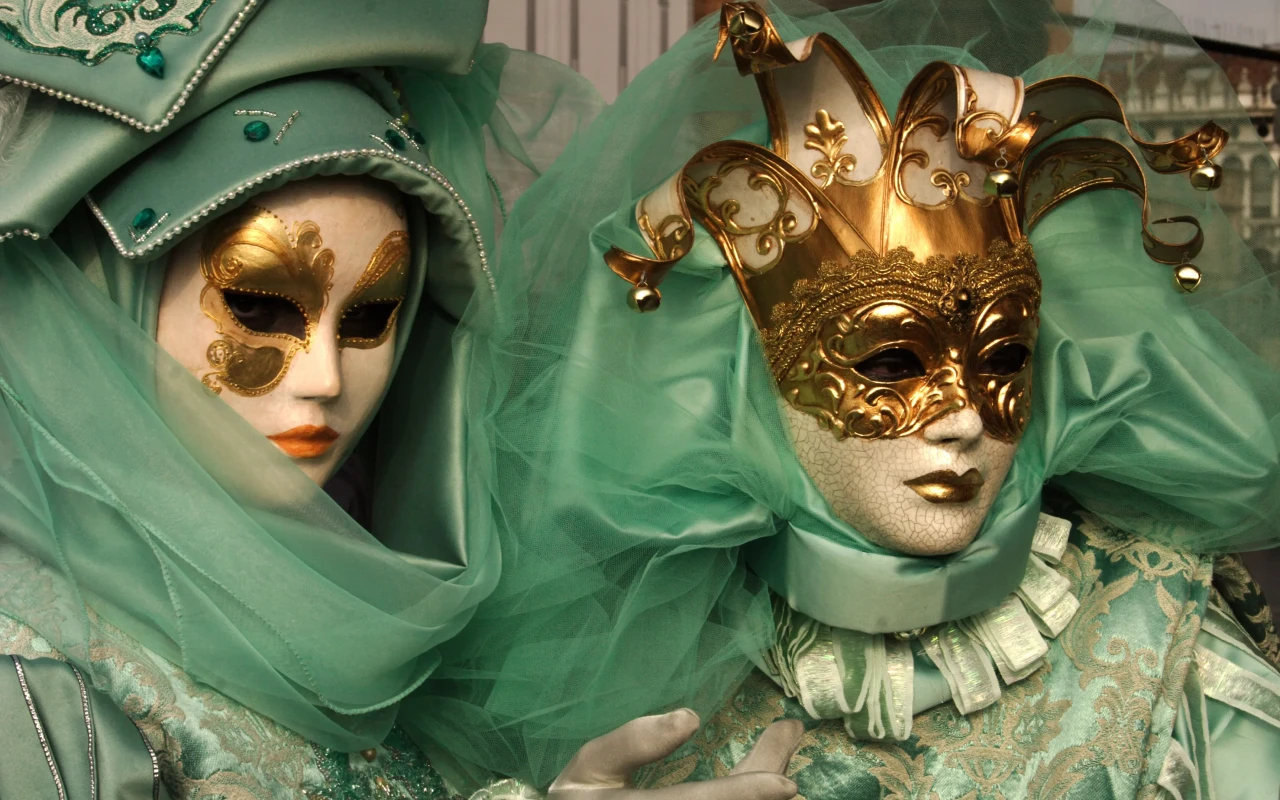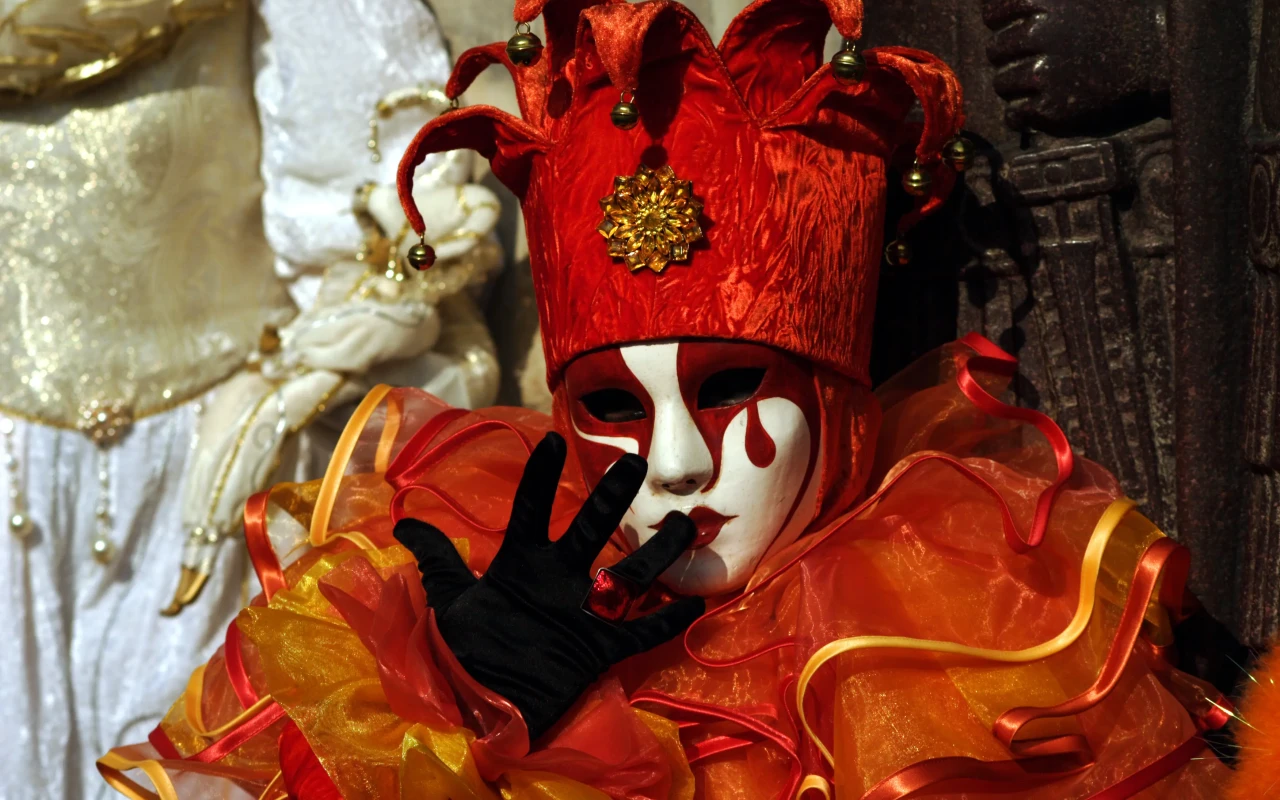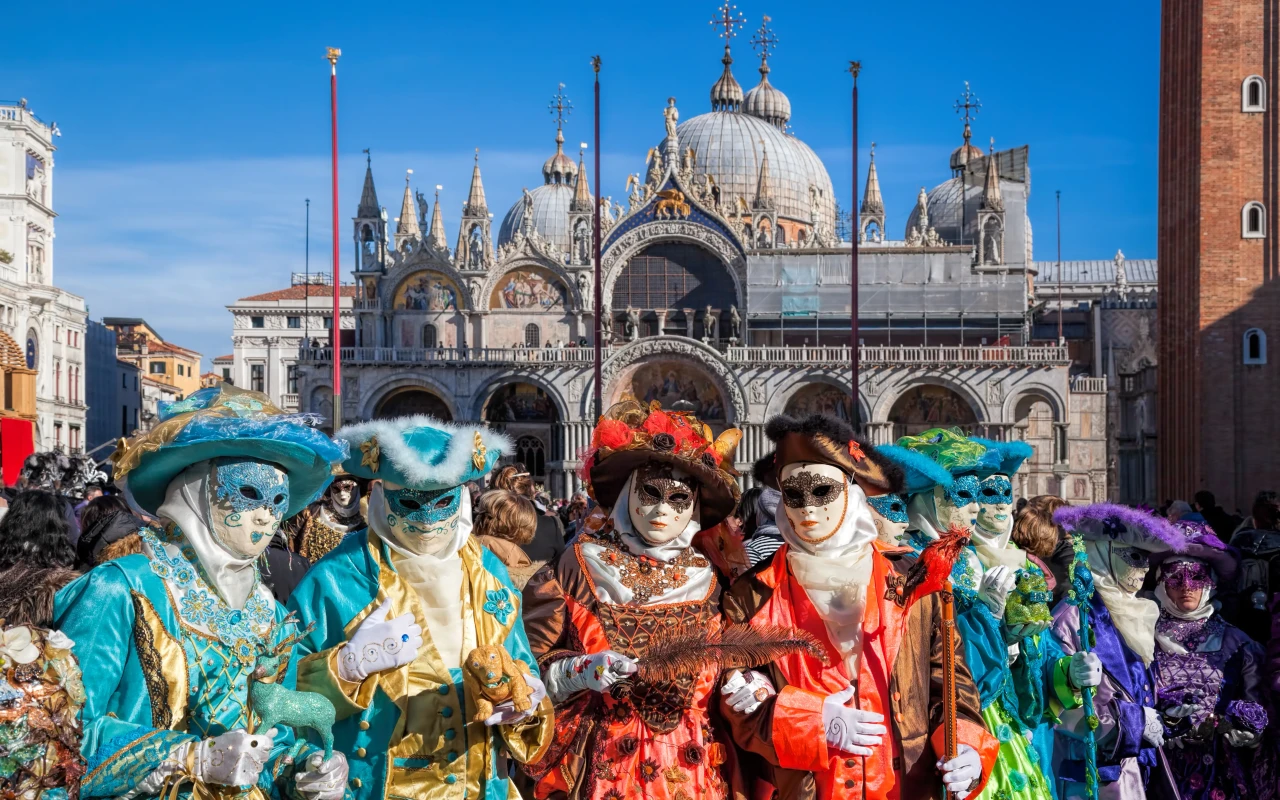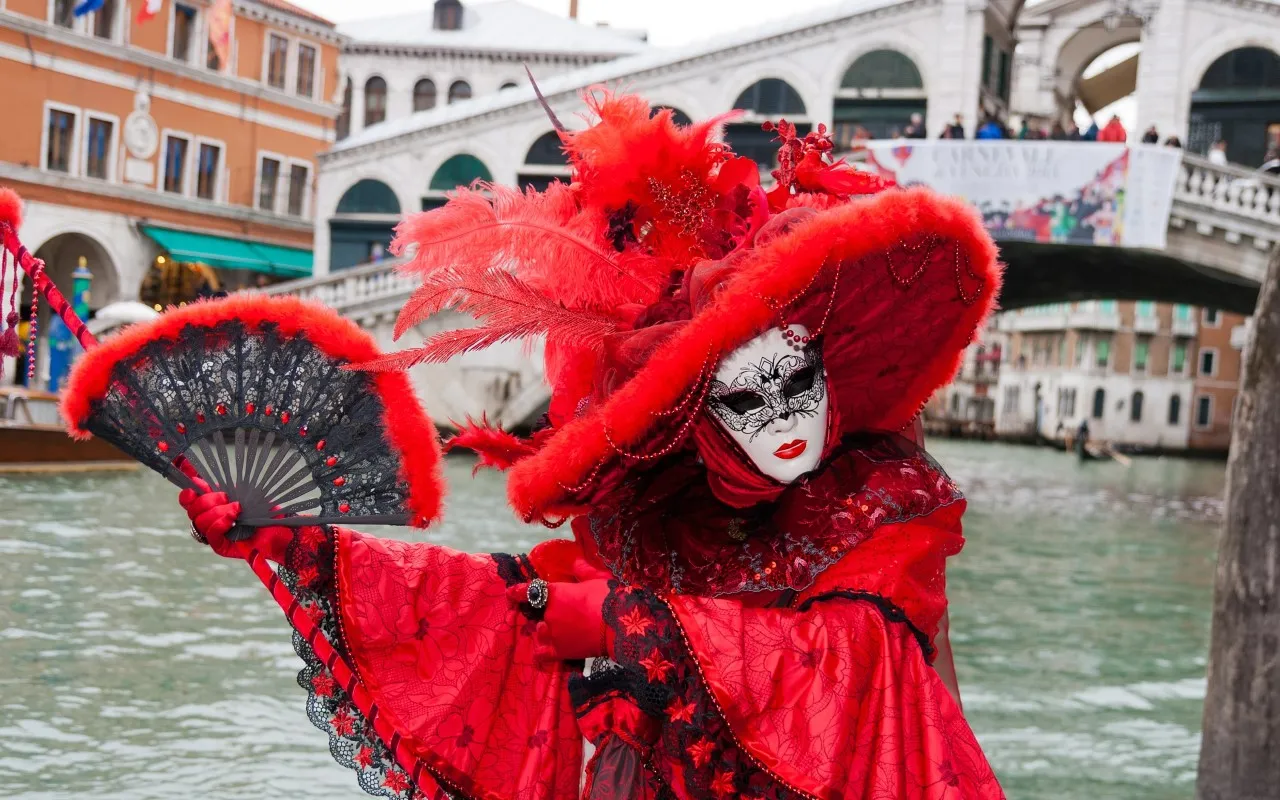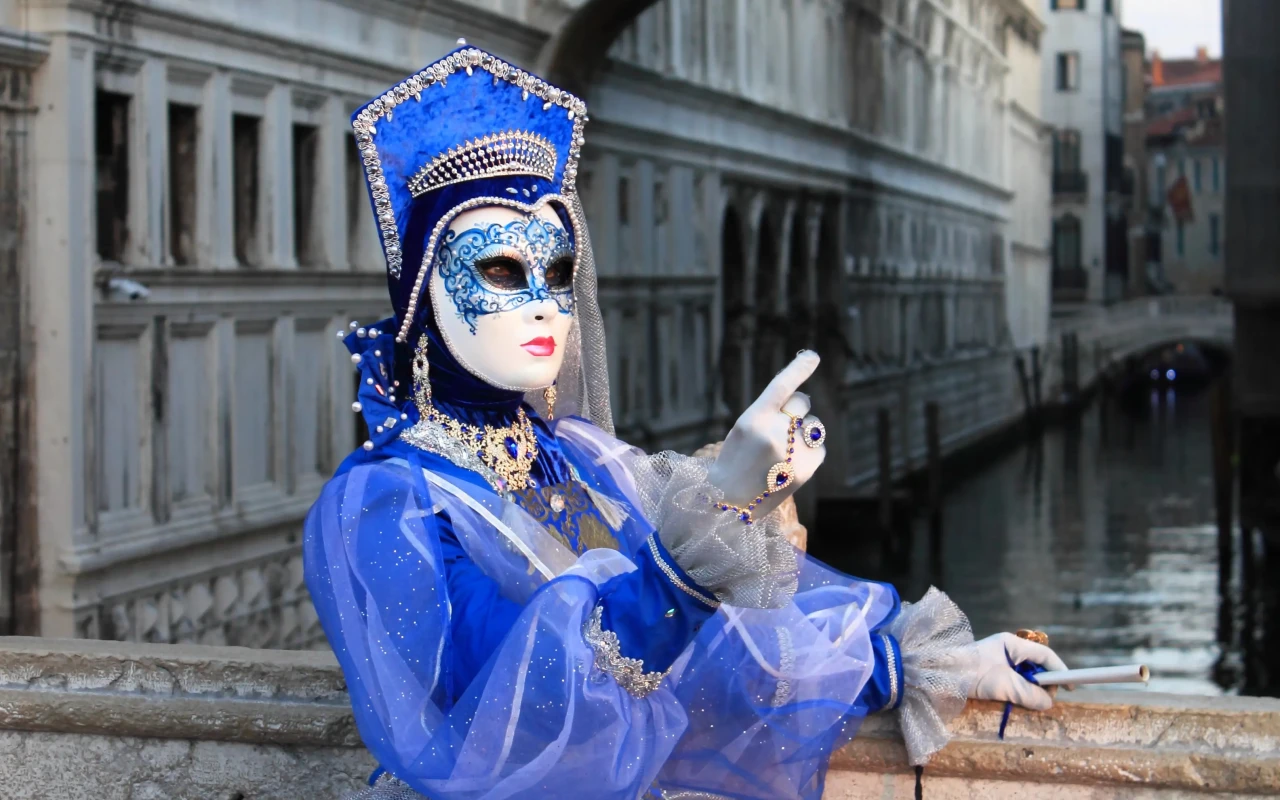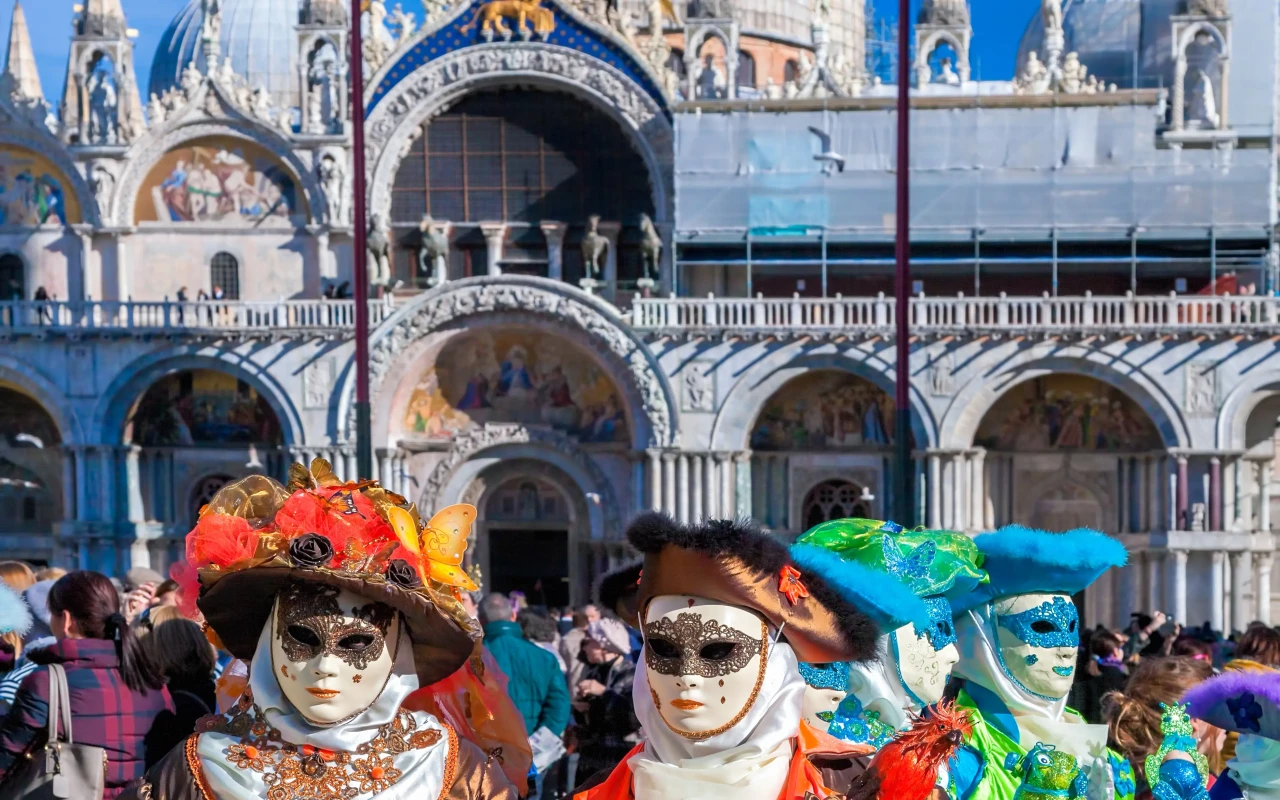Claim to Fame
The Venice Carnival is one of the oldest and most extravagant costume festivals in the world, famous for its masks, balls, and baroque splendor.
📌 Navigating Venice Carnival : Answers to Frequently Asked Questions
- Washrooms: Public restrooms are available but can be scarce or busy. Consider using facilities in cafes or museums with a purchase.
- Hours of Operation: The Venice Carnival typically runs for about two weeks in February. Main events occur on weekends and culminate on Shrove Tuesday (Mardi Gras).
- Important Information: Costumes range from lavish 18th-century attire to fantasy-themed creations. Renting or wearing a costume enhances the experience and allows access to select events.
- Admission Fee: Most events are free in public squares, but some masquerade balls and exclusive galas require tickets that can be expensive and must be reserved in advance.
- How Long to Visit: It’s easy to spend a full day exploring different neighborhoods, watching parades, and attending events. Some travelers dedicate multiple days to enjoy the full experience.
- Parking: Due to the event’s popularity and Venice's limited roadways, driving is strongly discouraged. Arrive via train (Santa Lucia Station) or ferry (vaporetto) to reach the main festivities.
- Family Friendly: While the elaborate masks and crowds may overwhelm very young children, there are family-friendly shows and parades designed for all ages.
- Photography: Photography is encouraged throughout the Carnival—especially of costumes and events. Always ask permission before taking close-up photos of individuals in costume.
- WIFI: Public WIFI may be available in select piazzas or venues, but connectivity is often limited due to crowd congestion.
- Picnic Area: No designated picnic areas, but public squares and canal-side spots can be used informally for sitting and enjoying food.
- Handicap Accessible: Most major areas in Venice are pedestrian-friendly, but accessibility can be limited in older parts of the city and during large crowds. Temporary ramps are sometimes installed over bridges for wheelchair users.
- Pets: Pets are allowed in public squares but may be restricted from certain venues or indoor masquerade events. Crowds can also be stressful for animals.
- Guided Tours: Numerous guided walking tours and themed masquerade events are available throughout the Carnival, often requiring advanced booking.
- Restaurant or Cafe: Plenty of cafes, street vendors, and restaurants operate during the festival. Prices may be higher near Piazza San Marco.
- Gift Shop: Temporary souvenir kiosks and costume vendors line major streets during Carnival, offering masks, accessories, and memorabilia.
Photos of Venice Carnival
Each year, Venice transforms into a fantastical stage of masked mystery and baroque pageantry during the Carnival — a celebration of indulgence, anonymity, and art that dates back to the 12th century. With costumed parades, candlelit balls, street performers, and operatic ambiance, the Venice Carnival is Venice at its most dramatic and unforgettable.
What to Expect
Expect an explosion of creativity and color. The streets, squares, and canals are filled with elaborate masks, period costumes, music, and festive energy. Events range from free street performances to exclusive masquerade balls held in historic palaces. There’s something for every kind of traveler — from casual photographers to high-society attendees.
Background and Cultural Context
Carnival began in Venice in the Middle Ages as a way for citizens to celebrate before the restrictions of Lent. Masks allowed people to hide their identities and break social rules — nobles and commoners mingled freely. Though banned by Napoleon and again under Mussolini, the tradition was revived in 1979 and has since grown into a world-renowned spectacle.
Best Time to Visit
The festival usually runs for two weeks in February or March. The opening weekend and final days (especially Fat Tuesday) are the most lively. Weekdays offer lighter crowds. Sunset is prime time for mask photography.
How to Get There
Carnival events are spread across Venice, but the heart is in Piazza San Marco and Rialto. Most major vaporetto lines service these areas. Plan extra time for walking — crowds slow movement considerably.
Photo Opportunities
Everywhere. But focus on:
- Sunrise near the Doge’s Palace for dramatic costume portraits
- Bridge scenes with fog and masked figures
- Costume processions in St. Mark’s Square
Travel Tips
- Book hotels months in advance — Venice fills up quickly.
- Wear comfortable footwear — cobblestones and crowds are a challenge.
- Renting a costume? Go early in the day for the best selection.
FAQs
Do I need a ticket to attend Carnival?
Public events are free. Masked balls and private parties require tickets, which should be reserved in advance.
Can I wear a costume as a tourist?
Absolutely! Many visitors do, and rental shops are plentiful.
Is Carnival family-friendly?
Yes — children love the parades, masks, and music.
Final Thoughts
The Venice Carnival is a feast for the senses and a journey into a time when elegance, drama, and fantasy ruled the city. Whether you dress up or simply watch the magic unfold, this is one of the most iconic experiences Venice has to offer.

